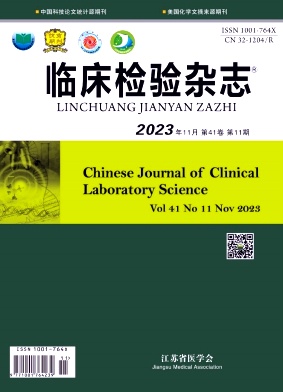Effective Identification of Ochrobactrum anthropi Isolated from Clinical Specimens
引用次数: 2
Abstract
Received July 29, 2020 Revised 1 August 10, 2020 Revised 2 September 3, 2020 Accepted September 3, 2020 Ochrobactrum anthropi is a non-fermentative oxidative gram-negative bacillus that produces oxidase. Distinguishing a mixed culture with non-fermenting bacteria having a similar appearance and oxidase-positive is difficult, and there is a limit to accurate identification with a biochemical identification system. This paper proposes that the Matrix-Assisted Laser Desorption/Ionization Time-of-Flight Mass Spectrometry Platform (MALDI-TOF) method is useful for classifying bacteria that are difficult to identify using biochemical testing methods. As a result of analyzing five cases of O. anthropi examined using MicroScan, it took 6.5 days to the final report, which was 3.5 days more than the 3.0 days of E. coli. The pus sample in patient 5 was a mixed infection with Achromobacter xylosoxidans, and it took 11.3 days because of multiple subculture and retests. Four patients were over 60 years old with an underlying disease, and the possibility of opportunistic and nosocomial infections could not be excluded. Among them, samples collected after 92 days of hospitalization were resistant to imipenem and meropenem. Therefore, an examination using the MALDI-TOF method will be useful for the rapid and adequate treatment of patients with difficult identification, such as O. anthropi. Copyright C 2020 The Korean Society for Clinical Laboratory Science. All rights reserved.临床标本中人类赭杆菌的有效鉴定
人类赭杆菌(Ochrobactrum anthropi)是一种产生氧化酶的非发酵氧化革兰氏阴性杆菌。区分具有相似外观和氧化酶阳性的非发酵细菌的混合培养是困难的,并且用生化鉴定系统进行准确鉴定存在限制。本文提出基质辅助激光解吸/电离飞行时间质谱平台(MALDI-TOF)方法可用于生物化学检测方法难以识别的细菌分类。利用MicroScan对5例人类疟蚊进行分析的结果显示,到最终报告所需时间为6.5天,比大肠杆菌(3.0天)多出3.5天。患者5的脓液样本为木氧化无色杆菌混合感染,多次传代和复检耗时11.3天。4例患者年龄超过60岁,有基础疾病,不能排除机会性感染和院内感染的可能性。其中,住院92 d后采集的样本对亚胺培南和美罗培南耐药。因此,使用MALDI-TOF方法的检查将有助于快速和充分地治疗难以识别的患者,如人疟蚊。版权所有2020韩国临床检验科学学会版权所有。
本文章由计算机程序翻译,如有差异,请以英文原文为准。
求助全文
约1分钟内获得全文
求助全文

 求助内容:
求助内容: 应助结果提醒方式:
应助结果提醒方式:


